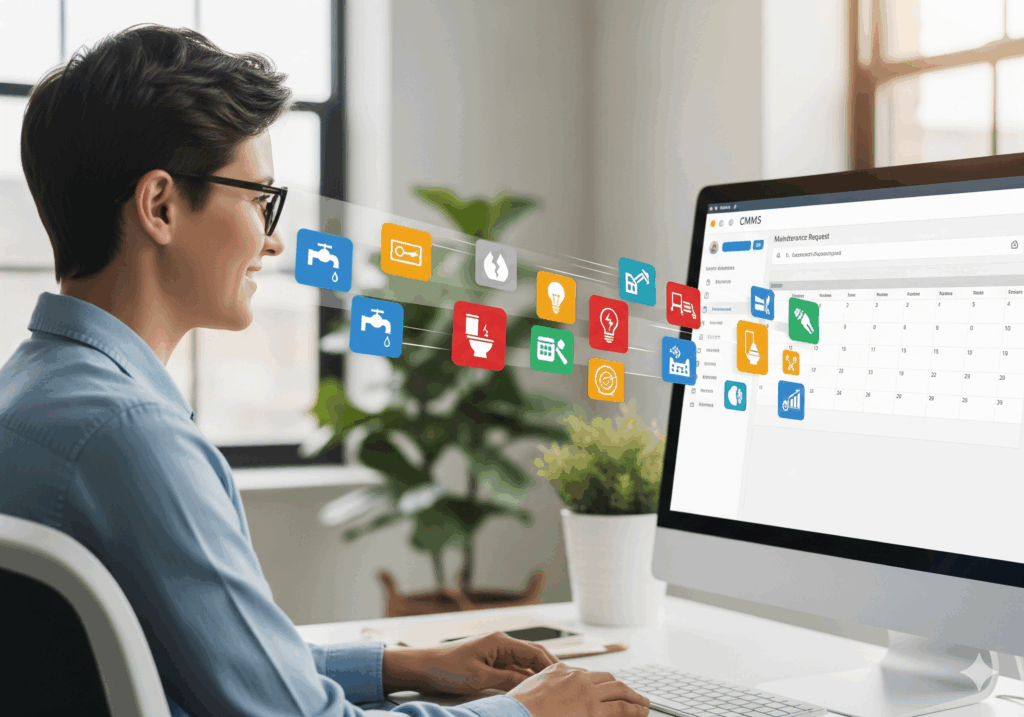
In the fast-paced world of property management, staying on top of maintenance tasks is a constant challenge. From handling tenant complaints and vendor schedules to tracking service history and budgeting, the complexity grows with every new unit added to your portfolio.
That’s where Computerized Maintenance Management System (CMMS) software comes in.
CMMS tools are designed to simplify, automate, and optimize property maintenance operations. For rental properties, especially multifamily buildings or scattered-site portfolios, CMMS software can be a game changer.
What Is a CMMS?
A CMMS (Computerized Maintenance Management System) is a digital platform that helps property managers and maintenance coordinators:
-
Schedule and track maintenance tasks
-
Manage work orders
-
Maintain service records and logs
-
Monitor asset health and costs
-
Communicate with tenants and vendors
It replaces spreadsheets, sticky notes, and verbal updates with an organized, centralized, and accessible system.
Top Benefits of Using CMMS for Rental Property Maintenance
1. Centralized Work Order Management
Instead of losing requests in your email or forgetting verbal complaints, a CMMS centralizes all maintenance requests in one place. Each request can be tracked from submission to completion.
-
No missed tasks
-
Real-time updates
-
Prioritization made easy
2. Faster Response Times
With automatic notifications and scheduling features, CMMS software enables quicker dispatching of vendors or in-house staff. Coordinators can assign the right technician, with the right tools, at the right time.
-
Improves tenant satisfaction
-
Reduces wait time and delays
3. Preventive Maintenance Scheduling
A major strength of CMMS is the ability to automate preventive maintenance like HVAC tune-ups, fire alarm checks, or pest control, so you’re not always in reactive mode.
-
Extends equipment life
-
Reduces emergency repairs
-
Lowers long-term maintenance costs
4. Detailed Maintenance Records
CMMS platforms keep a digital history of every maintenance task, technician notes, costs, and photos.
-
Useful for audits and inspections
-
Helps with budgeting and forecasting
-
Essential for resolving disputes or legal claims
5. Improved Vendor and Staff Coordination
CMMS allows vendors and maintenance staff to receive task notifications, upload photos, leave comments, and mark tasks complete, often using a mobile app.
-
Clear accountability
-
Reduces back-and-forth calls
-
Better time and labor tracking
6. Asset and Inventory Tracking
Whether it’s AC units, plumbing systems, or water heaters, CMMS tools track equipment across units and buildings. Some platforms also help you monitor part usage and inventory levels.
-
Know when systems are due for replacement
-
Avoid repeated fixes on aging equipment
-
Maintain budget accuracy
7. Mobile Access for On-the-Go Teams
Many CMMS systems are cloud-based and mobile-friendly, letting your maintenance teams receive, update, and close work orders on-site using a smartphone or tablet.
-
Boosts productivity
-
Reduces paperwork
-
Keeps everything real-time
8. Custom Reports and Analytics
Need to know how much you’ve spent on plumbing this quarter? Or how many unresolved maintenance tickets are pending?
CMMS software offers customizable reports and dashboards that give you insights into:
-
Costs by property or vendor
-
Response time performance
-
Equipment failure trends
-
Maintenance volume by category
9. Tenant Satisfaction and Transparency
Many CMMS platforms offer tenant portals or app access where residents can:
-
Submit maintenance requests
-
Upload photos or videos
-
Check status updates
Conclusion
For rental property owners and managers, using CMMS software isn’t just a modern convenience, it’s a competitive advantage. It brings organization to chaos, reduces costs, improves tenant relationships, and helps scale maintenance operations without sacrificing quality.
Whether you’re managing 10 units or 500, a good CMMS helps you work smarter, not harder.
